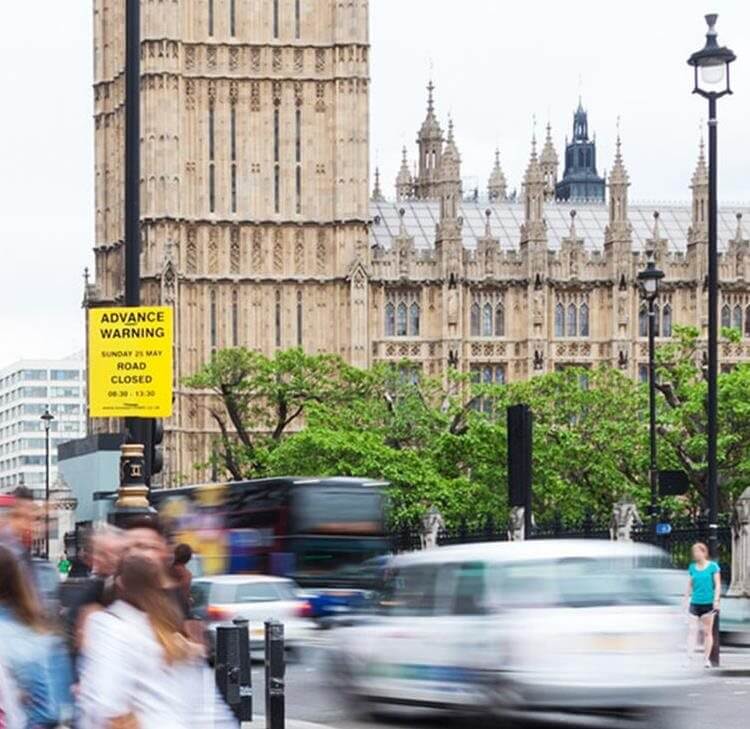Section 54 of the Modern Slavery Act 2015 (MSA) came into force on 29 October 2015. It is designed to increase supply chain transparency and place greater accountability on businesses for the condition of their supply chains.
‘Modern slavery’ is the term used to encapsulate the two offences in the MSA: slavery, servitude and forced or compulsory labour; and human trafficking.
S54 applies to a commercial organisation which:
- supplies goods or services
- has a total turnover of £36m a year or more (this is global turnover and not just turnover in the UK).
Charities and universities engaging in commercial activities will not be exempt from the requirement if they fulfil the relevant criteria (regardless of their purpose and whether or not profits are made).
|
Commercial organisation A body corporate or partnership, wherever incorporated or formed, which carries on a business, or part of a business, in any part of the UK. This includes franchisers, and each parent and subsidiary (whether or not based in the UK). Turnover Total global turnover of the commercial organisation (including all of its subsidiary undertakings) after the deduction of trade discounts, value added tax and any other taxes. |
| Prepare a statement in respect of each financial year |
An organisation which fulfils the above criteria will have to make a ‘slavery and human trafficking statement’ stating the steps it has taken during that financial year to ensure that slavery and human trafficking is not taking place in:
OR Issue a statement that it has taken no such steps. |
| Disclosure/ Publication |
If the organisation has a website, the statement must be published on the organisation’s website, with a prominent link to the statement on its homepage – the government suggests a directly visible link on the home page or it being part of an obvious drop down menu and recommends a link such as ‘Modern Slavery Act Transparency Statement’. Statements from previous financial years should also be published here. In addition, there is no a voluntary central registry of statements hosted by the government where statements can also be published. If the organisation does not have a website, it must provide a copy of the statement to anyone who makes a written request for one within 30 days from the date the request is received. |
| Appropriate approval | In the case of a company, the statement must be approved by the board of directors and signed by a director. |
There are currently no mandatory requirements as to the content or length of the statement. Based on the MSA requirements, the information relating to an organisation that may be contained in a statement includes:
- its structure, business model and supply chains
- its policies relating to slavery and human trafficking
- the parts of its business and supply chains where there is a risk of slavery and human trafficking taking place, and the steps it has taken to assess and manage that risk
- its effectiveness in ensuring that slavery and human trafficking is not taking place in its business or supply chains, measured against appropriate key performance indicators
- its due diligence processes in relation to slavery and human trafficking in its business and supply chains – this should be proportionate to the identified modern slavery risk, the severity of that risk and informed by any wider risk assessments that have been conducted
- the training about slavery and human trafficking available to its staff.
The government’s ‘Transparency in Supply Chains etc. A practical guide’ gives further pointers on what the statement should include. Please see our statement checklists for further details.
Slavery and Human Trafficking Statement Checklist: Section 54 Modern Slavery Act 2015
- The statement should be written in simple language that is easily understood.
- The statement should be accessible to readers – there is a balance to be struck between providing adequate details and including too much technical or legal information that could make it difficult to follow.
- The statement should be true and reflect actual steps taken or begun - the statement should cover the full financial year in question but if an organisation has only recently undertaken activities it may choose to produce a statement that indicates certain activity undertaken covers only a particular part of that year.
- The statement should be succinct but cover all relevant points – this can be done by linking to relevant documents or policies rather than copying large sections of them into the statement. Organisations can support narrative by providing relevant links to policies/documents that are publicly available and already published on their website. Information to disclose here could include:
- policies that deal with business relationships
- recruitment policy
- procurement policy
- employee code of conduct
- training policies relating to increasing awareness of modern slavery.
- The statement should be reflective of an organisation’s sector, the complexity of its structure and supply chains or countries its suppliers are working in – outlining actions by specific country might help readers to understand the context of any actions or steps taken to minimise risks. Organisations should clearly state the sector(s) their business operates in and whether any of the work is seasonal.
Evolution of the statement
The government expects organisations to build on what they are doing year on year, so it will not be possible to simply ‘recycle’ the same statement each financial year – initial statements might reflect how an organisation is starting to act on the issue and outline planned future actions, whereas subsequent statements will build on this and show how compliance is evolving. Remember that this statement is not a guarantee that an organisation’s entire supply chain is free from slavery – it should however capture all of the actions that have/are being taken in relation to any part of its supply chain.
Sanctions for non-compliance
There is no initial fine However, the Secretary of State may seek an injunction to compel the organisation to issue a statement - if this injunction is not complied with the organisation will be in contempt of a court order, which is punishable by an unlimited fine
So, why should you take action?
The requirements of the MSA seek to create a ‘race to the top’ by encouraging organisations to be transparent about what they are doing and in the process drive up standards. Non-compliant organisations may expect pressure from wider society, shareholders and competitors to implement the MSA requirements – and risk negative publicity and an adverse impact on brand and share value for failing to comply, especially if they operate in a sector which is already in the spotlight for labour and supply chain issues. Your suppliers or customers may also scrutinise your actions more closely in light of their own obligations to comply.
The government has also indicated that it may name and shame organisations that do not comply in a timely manner.
Practical tips to aid compliance with s. 54 of the Modern Slavery Act 2015
Who
Identify who will be responsible for s. 54 compliance in your organisation – whilst the MSA does not dictate who in an organisation must be responsible, support from top level management is vital. You should consider who is responsible for:
- initial compliance
- ongoing assessment
- necessary training to the organisation
- dealing with incidents of modern slavery/trafficking that are reported.
Statement?
Consider whether you will need to prepare and publish a statement (and when) – and how this may already fit within any wider compulsory or voluntary reporting currently undertaken by your organisation (and any future reporting that you are already planning for). Also consider how this requirement fits in with your wider framework around ethical trade, CSR/ESG and human right rights for example.
When?
Diarise the latest date by which you will need to publish your statement.
Content?
Consider the proposed content of your statement based on the statutory requirements and government guidance.
Allocate resources
Consider what activity you are undertaking to eliminate slavery and human trafficking from your organisation – evaluate the cost/budgeting requirements of this (e.g. training costs) and factor these into your business planning. Remember that expense can be minimised where relevant training is included as a module in a wider training programme and target training at your higher risk areas where it can have most impact. If employees who are most likely to encounter victims directly are more aware of the indicators of modern slavery and how to report suspected cases, and what actions they can expect the organisation to take, they can flag this to you and help to root it out in a particular business/supply chain.
Risk analysis
Implement risk analysis and supply chain mapping to estimate the risk of slavery and human trafficking in your supply chains – where are your issues most likely to lie? You should consider:
- if you operate in higher risk countries
- the sector you are in
- whether there are transactional risks – banks/financial institutions may be involved in facilitating financing from or supporting cases of modern slavery
- the duration of your business partnerships – for example, in some cases existing long term partnerships may involve less risk.
Contact your suppliers
You should actively seek information from your suppliers:
- look at the information you currently hold about your supply chain
- engage with suppliers to ask for additional information about goods/services supplied
- set up a procedure for direct and indirect suppliers to assess the reliability of information from them
- check the working practices of those you have a direct contractual arrangement with and check your policy on sub-contracting – make it clear that you only allow sub-contracting with your express prior approval or with companies having a zero tolerance to modern slavery and trafficking
- revise any audit regime of suppliers that you might already have in place to add compliance with MSA requirements.
Remember that many human rights violations may not be immediately apparent, as suppliers go to great lengths to hide them.
Contract audit
Review/amend any existing supply chain contracts to require suppliers to comply with MSA requirements (carefully designed KPIs may assist with this) and ensure that appropriate provisions are inserted into ne contracts – but be careful not to make demands of suppliers or sub-contractors that might lead them to violate human rights e.g. late orders, high pressure deadlines.
Policy review
Review your current internal policies and procedures and implement any updates or new policies that are required – for example, ensure slavery and human trafficking is covered in your human rights/CSR policy and amend your whistleblowing policy as required. Whilst you do not have to have a MSA-specific policy, you may find this a useful way to collate your required action points.
Communication
Disseminate updated information about your policies/processes to your organisation – effective communications can be vital in embedding anti-slavery activity into your culture and standard practice.
Training
Plan an appropriate training programme to make employees aware of the MSA requirements and implications for your organisation – train employees how to spot the warning signs of modern slavery and human trafficking and how they should deal with them if they arise. In particular, train those involved in buying/ procurement and recruitment if they are likely to be most affected.
Act
Act on your updated risk assessments – implement the measures identified to reduce your risks.
Measures
Regularly review the measures you are taking – track how effective they are and make any necessary improvements – appoint a person to assess risk on an ongoing basis. Be alive to the continuously changing nature of modern slavery and consider whether carefully designed KPIs can help to demonstrate your progress over time in preventing modern slavery in your business and supply chains.
Consider
Consider what measures you should take if your organisation causes or contributes to modern slavery or trafficking – e.g. issuing an apology or compensation.
Be clear
Be clear what measures you will take if you become aware that a supplier is found to be involved in modern slavery/human trafficking. The measures required to be taken depend on the nature of the issue.
Supply chain
Review any statements made by organisations which are part of your supply chain.
Sharing risks
Where appropriate, consider sharing risks with trusted partners such as representative bodies, industry associations and working groups to gain a deeper understanding of issues relevant to your organisation.
Contact

Raymond Silverstein
Partner
raymond.silverstein@brownejacobson.com
+44 (0)207 337 1021
Our expertise
You may be interested in...
Opinion
Addressing worker exploitation: Essential guidance for HR
Legal Update
Updated Modern Slavery Act Transparency Guidance: Key obligations and steps for businesses
Opinion
Forced labour goods: a landmark decision
Legal Update
ESG and the path to net zero: Construction industry considerations
Opinion
Modern slavery in the care sector – how employers can manage risks
Press Release
Browne Jacobson collaborates with The GLAA and University of Nottingham to tackle modern slavery and human trafficking
Legal Update
Modern Slavery and the NHS – new challenges on the horizon for NHS bodies and their suppliers
According to a report published by the Financial Reporting Council in April, modern slavery generates an estimated US$150 billion annually and encompasses 40 million people in slavery globally.
Legal Update
A new Modern Slavery Bill
Legal Update
Employment and Workforce Survey 2021: Gender and Race Equality – Future Changes Ahead?
The issue of equality has remained high on the agenda during the pandemic. The #MeToo and Black Lives Matter movements have increased awareness of gender and race equality issues across all of society. Our survey indicated there was still a significant number who were making changes either for gender or race or both.
Legal Update
The Modern Slavery (Amendment) Bill is published
The Modern Slavery (Amendment) Bill recently started its journey through Parliament. Find out more.
Legal Update
Central registry for modern slavery statements now launched
The Home Office has now launched a central registry for section 54 statements, a central registry for statements prepared in accordance with section 54 of the Modern Slavery Act 2015 (MSA).
Legal Update
Government response to transparency in supply chains consultation published
The publication follows recent media coverage regarding allegations of exploitation in the garment industry - what changes are proposed?
Legal Update
Modern Slavery Act 2015 - updated statutory guidance for public authorities in England and Wales
This is timely guidance given that modern slavery will not be exempt from the health, social and economic challenges brought about by Covid-19.
Legal Update
Modern slavery and the coronavirus pandemic
The Home Office has published a Guidance document for businesses on publishing a modern slavery statement and addressing modern slavery risks in the context of the COVID-19 pandemic.
Legal Update
Your anti-modern slavery obligations – a reminder that even the biggest companies are facing challenges…
It has recently been reported that a well-known UK law firm has sent British American Tobacco (BAT) a pre-action letter alleging forced and child labour on behalf of 350 child labourers working on tobacco crops in Malawi.
Legal Update
Final Report on review of the Modern Slavery Act 2015 laid in Parliament
On 22 May 2019 the Final Report of the independent review of the Modern Slavery Act 2015 (MSA) was laid in Parliament.
Legal Update
Modern Slavery Act 2015 – latest developments
Momentum is gathering in the call to take a tougher approach to how large businesses tackle modern slavery issues in their supply chains.
On-Demand
Leading the conversation on the Modern Slavery Act
Opinion
Private Members' Modern Slavery Bill dropped but the Modern Slavery Act 2015 remains fully in force
The Modern Slavery (Transparency in Supply Chains) Bill has effectively been dropped by its sponsoring MP and will not progress any further.
Legal Update
Modern slavery - your risks and duties as the next deadline approaches
Modern slavery is the fastest growing organised crime in the world. The UK is far from immune being a leading country of destination.
Legal Update
Modern Slavery Act 2015 update – proposed changes to section 54 requirements
Section 54 of the Modern Slavery Act 2015 now requires any commercial organisation which supplies goods or services in the UK and has an annual turnover of £36m or more to publish an annual slavery and human trafficking statement.
Legal Update
A slave to the NHS? Modern Slavery and the NHS Supply Chain
Introduced in October 2015, the Modern Slavery Act (MSA) is a landmark move toward tackling illegal exploitation within the UK.
Legal Update
Modern Slavery Act - reporting obligation
What should your employees do if an incident of modern slavery is identified within your organisation or its supply chains?
Legal Update
Are you ready for the Modern Slavery Act 2015? ‘Commercial Organisations’ analysis
What “commercial organisations” does the MSA apply to?
Guide
Guide: Are you ready for the Modern Slavery Act 2015?
Guide
Guidance on Section 54 of the Modern Slavery Act 2015
Legal Update
Are you ready for the Modern Slavery Act 2015?
Browne Jacobson has been watching with interest as the Modern Slavery Act 2015 has evolved.
Legal Update
The Modern Slavery Act 2015
The Modern Slavery Act 2015 requires certain organisations which carry on a business or part of a business in the UK to disclose what activity they are undertaking to eliminate slavery.










